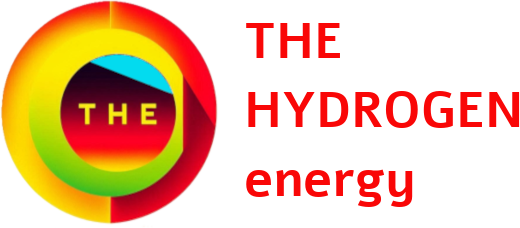Town gas history: Towns across Europe and North America relied on a hydrogen-rich fuel for their daily needs: town gas. This historical “hydrogen era” offers valuable insights for our current push towards a hydrogen economy.
Town gas history and Hydrogen Usage for heating, lighting and cooking needs:
Hydrogen’s journey as a fuel source isn’t as novel as we might think. Long before visions of hydrogen-powered cars filled our minds, towns across Europe and North America relied on a hydrogen-rich fuel for their daily needs: town gas.
This town gas wasn’t pure hydrogen, but it played a significant role in the 19th and early 20th centuries.
This town gas wasn’t pure hydrogen, but it did contain a significant amount of it. Produced by processing coal, town gas was a mixture of hydrogen, methane, carbon monoxide, and other gases. While not entirely emissions-free, it offered a cleaner alternative to burning raw coal directly for heating and cooking needs.
Let’s delve into this forgotten chapter of hydrogen’s history, that is from town gas history, enriched with fascinating data points and facts:
- The Dawn of Town Gas (1800s): The year is 1802. Frenchman Philippe Lebon, a pioneering engineer, patents the world’s first gas light using hydrogen-rich gas derived from wood. This invention sparks a revolution. Just eight years later, Frederick Winsor establishes the first commercial gasworks in London, using coal to produce town gas. Major European cities like Berlin (1816) and Paris (1817) quickly follow suit, embracing this cleaner alternative to traditional fuels.
- Across the Atlantic (Early 1800s): News of town gas travels westward. In 1816, Baltimore, Maryland, becomes the first American city to illuminate its streets with gas lamps fueled by hydrogen-rich gas derived from coal. By 1825, New York City boasts its own gasworks, and the trend takes root across the United States. Philadelphia (1836) and Boston (1823) join the movement, replacing whale oil for street lighting with this innovative fuel source.
- Hydrogen’s Contribution: Town gas wasn’t a uniform product. The exact composition varied depending on the production process, but hydrogen played a starring role. Historical records suggest the hydrogen content could range from 30% to over 50% in some regions. This composition offered several advantages over burning raw coal:
- Efficiency Boost (1850s): By the mid-1800s, the invention of the gas burner revolutionizes cooking. Town gas, with its high hydrogen content, burns hotter and cleaner than coal, allowing for more efficient and controllable cooking compared to bulky coal stoves. A typical family could now prepare a meal in a fraction of the time.
- Air Quality Improvement (1880s): Major cities in the 19th century were notorious for their smog and pollution from burning coal. Town gas, while not perfect, produced significantly less soot and smoke. Data from London in the 1880s suggests a substantial decrease in airborne particulates after the widespread adoption of town gas.
- Lighting Up Lives (1800s – Early 1900s): Town gas wasn’t just for cooking. The invention of the gas mantle in the late 1800s further enhanced its utility. These mantles, made of rare earth metals like thorium, produced a brighter and more efficient light when exposed to a gas flame. Gas lamps powered by town gas illuminated streets and homes, offering a significant improvement over flickering oil lamps and candles.
- Distribution: The gas was delivered through existing gas pipeline networks, similar to how natural gas is distributed today. However, the range was limited due to the technology of the time.
- The Fade of Town Gas (Mid-20th Century): The reign of town gas began to wane in the mid-20th century. The discovery of vast natural gas reserves in the United States (1920s) and Europe (1950s) offered a cleaner and more efficient fuel source. Pipelines transporting natural gas directly to homes and businesses rendered the need for local gasworks obsolete.
- Additionally, the rise of electricity provided a new and versatile option for powering appliances.
While town gas eventually faded from prominence, its legacy lives on today as town gas history. It serves as a historical reminder that hydrogen isn’t a completely new concept in the clean energy conversation. Today’s researchers are building upon this past, striving to develop cost-effective and sustainable methods for producing hydrogen to power our future.
This article is Copyright protected







Please note that calling Town Gas an improved method over using coal or other burnable materials such as wood directly is false from a carbon dioxide emissions level.
The vast majority of hydrogen produced today is produced by a similar method as town gas was produced: some OTHER fuel is partially burned and the hydrogen is recovered from the exhaust. The problem with this approach is that converting from one form of energy is NEVER 100% efficient in the real world.
Remember the three laws of thermodynamics: 1. You can’t win. This means you cannot produce energy from nothing. 2. You can’t break even. This means you cannot convert pure heat into totally useful energy, which practically means you cannot invent a perpetual motion machine/generator. 3. You can’t get out of the game. This means you cannot reach a temperature of absolute zero or below.
While you may produce a lot of hydrogen in the form of town gas in a relatively inexpensive manner by using other fossil fuels as the starting source, you have to remember what happens to the REST of that partially burned fossil fuel. Usually, they are consumed to produce carbon dioxide and other gases after the hydrogen gas mixture has been recovered.
This means that if you changed all households to hydrogen gas, you would not produce as much pollution in the locations where the gas was used. However, CO2 emissions are a worldwide problem and you would be producing them somewhere else…usually by burning the now hydrogen deficient fossil fuels/wood and producing much greater amounts of CO2 as the oxygen present in the air at that location is not producing water vapor.
When George W. Bush made a push to make a hydrogen economy, his entire push was based on recovering the hydrogen from fossil fuels, which, from the second law, means the actual CO2 cost is actually higher.
FYI.
KJK, Ph.D. in Chemical Engineering
KJK, First of all thank you for your valuable comment and for highlighting the critical point about town gas and its carbon footprint. You are right to emphasize that town gas production, especially when derived from fossil fuels, is not a step forward in reducing CO2 emissions compared to directly burning those fuels. The article’s reference to town gas was only intended as a simplified, historical example to illustrate the concept of hydrogen usage, how it was handled, not to endorse it as a sustainable practice.
I appreciate you bringing up the thermodynamics principles, which clearly demonstrate the energy losses in converting fuels to hydrogen and the resulting CO2 emissions. The focus must indeed be on an efficient green hydrogen production from vast renewable energy sources for a truly sustainable clean fuel focusing only on reduction of arresting global warming. Thanks for your comment to ensure clarity and accuracy on this important issue.